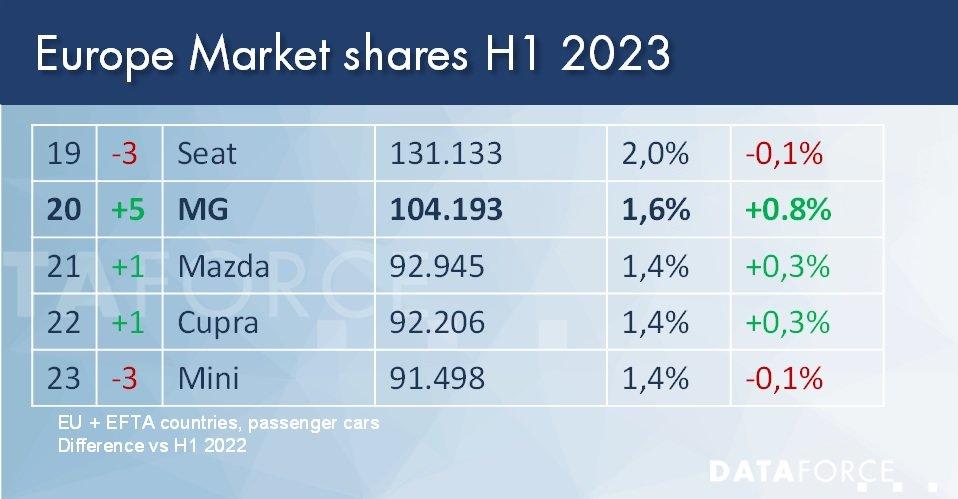Not small anymore, MG pushing into the Top 20 of brands in 2023

Breaking News:
Kathmandu Nepal
Donnerstag, Apr. 24, 2025

The Definition of "Chinese": An Evolving Perspective in the European Automotive Market
Delving into the introduction of Chinese brands in Europe requires a broader understanding of what "Chinese" truly signifies. Volvo, once a quintessential Swedish brand, has been under the ownership of Geely since 2010, following its previous ownership by Ford starting from 1999. Similarly, Smart is now part of a joint venture between Mercedes and the Geely group. Even though MG may carry a UK nameplate, it has been fully developed in China. This underlines the fact that the Chinese market entry has been underway for a longer period and has progressed further than one might expect.
The numbers speak for themselves, highlighting the remarkable performance of purely Chinese brands in the European market. In 2023 alone, there has been a remarkable 80% increase in market share compared to the previous year first half year, positioning Chinese brands at a notable 2.2% of the total market. Considering Volvo, Polestar, and Smart as Chinese OEMs, this figure surges to an impressive 4.8%, meaning that approximately one in every 20 newly registered cars in Europe has Chinese heritage. With numerous new launches on the horizon from Chinese OEMs, no doubt the market share will continue to rise.
MG Emerges as a Strong Contender, Outperforming Mazda, Suzuki, and Honda in 2023
MG, the Chinese automotive brand, has made remarkable strides in the European market, achieving a significant foothold by capturing a 1.6% market share in the first half of the year. Surpassing formidable competitors such as Mazda, MINI, Suzuki, and CUPRA, MG has cemented its position among the top 20 best-selling brands in Europe. The United Kingdom plays a crucial role in this success, accounting for nearly 40% of MG’s market share. This concentration in a single country is not unique to MG, as other leading brands like Lynk & Co, DR, and EVO also experience a similar pattern, with high volumes registered in specific countries such as the Netherlands and Italy.
Electric Vehicles (EVs) and Plug-in Hybrids lead the Way, no Diesel in sight.
As anticipated, plug-in vehicles continue to dominate the powertrain market, surpassing the overall market average. An intriguing observation is that in Italy, both DR and EVO deliver a portion of their vehicles with converted gas installations. Notably, no diesel vehicles have been introduced thus far, and it seems unlikely that they will become available in the future. It is worth mentioning that Lynk & Co plays a significant role in the plug-in hybrid segment, while MG focuses predominantly on BEVs.
Focus on the compact segment, leaving the small cars to the Europeans.
Chinese automotive brands are strategically targeting the compact segment, encompassing both hatchbacks and SUVs, rather than venturing into smaller vehicle segments predominantly dominated by European manufacturers. While there is a demand for small, affordable vehicles in Europe, Chinese brands have so far not ventured into this space. This approach stems from considerations of profitability and the availability of models within their line-up. Notably, brands like Nio, Ora, and Hongqi have set their sights on the premium segment, showcasing their commitment to delivering high-quality offerings to European consumers.
Figure 5: Vehicle segment weight for Compact Cars and Compact SUVs in 2023
As a leading market research company, we bring transparency to the European automotive market. Independent – with over 25 years of experience – we set standards and make markets comparable.
Dataforce Verlagsgesellschaft für Business Informationen mbH
Hamburger Allee 14
60486 Frankfurt am Main
Telefon: +49 (69) 95930-0
Telefax: +49 (69) 95930-333
http://www.dataforce.de
![]()